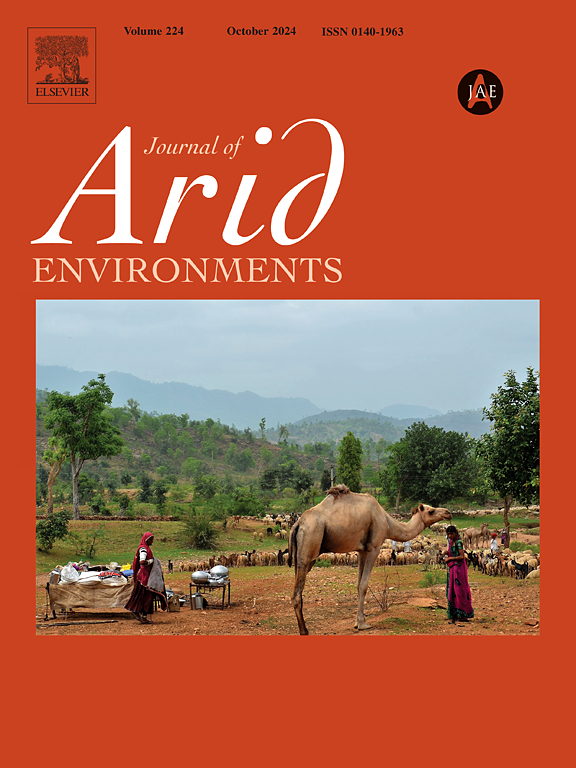Root growth and resource allocation in seedlings of two mezcal agave species under salt stress
IF 2.5
3区 环境科学与生态学
Q2 ECOLOGY
引用次数: 0
Abstract
Soil salinization is a problem that grows every year and is accentuated in arid and semi-arid zones, particularly areas with irrigated agriculture. To cope with this stress, desert plants have developed a variety of responses, including the modification of the architecture of their root system. However, the inclusion of root phenotypic traits in plant breeding programs hasn't been considered in most studies, so little is known about how the roots of desert plants respond to salinity stress and whether their cultivation is viable in saline soil. Within the arid and semi-arid environments, the genus Agave is endemic to the Americas, and wild and cultivated species have been used to obtain mezcal and tequila, plus several other traditional products. In this work we studied the early growth of two in vitro cultivated Agave species under salt stress (NaCl). We have determined that Agave angustifolia is tolerant to salinity, while A. marmorata is resilient to it. Although salt stress reduced the biomass of A. marmorata plants, it was found that at higher salinity the primary root grew larger than the adventitious roots. Moreover, we found that under salt stress, growth is oriented more towards the shoot rather than the root. Thus we propose that the differential growth of root types and resource partitioning would be important components in the response of salt stress, worth investigating for Agave breeding and conservation.

盐胁迫下两种梅斯卡龙舌兰幼苗根系生长及资源分配
土壤盐碱化是一个每年都在增长的问题,在干旱和半干旱地区,特别是灌溉农业地区,问题更加严重。为了应对这种压力,沙漠植物已经发展出各种各样的反应,包括改变它们根系的结构。然而,在大多数研究中,植物育种计划中没有考虑到根系表型性状,因此对沙漠植物的根系如何应对盐度胁迫以及它们在盐碱地中是否可行知之甚少。在干旱和半干旱的环境中,龙舌兰属是美洲特有的,野生和栽培的物种被用来获得梅斯卡尔和龙舌兰酒,以及其他几种传统产品。本文研究了两种龙舌兰在盐胁迫下的早期生长情况。我们已经确定Agave angustifolia耐盐,而A. marmorata耐盐。虽然盐胁迫降低了黑桫椤的生物量,但在高盐胁迫下,黑桫椤的初生根比不定根长得大。此外,我们发现在盐胁迫下,生长更倾向于向茎而不是向根。因此,根系类型的差异生长和资源分配是龙舌兰对盐胁迫响应的重要组成部分,值得研究。
本文章由计算机程序翻译,如有差异,请以英文原文为准。
求助全文
约1分钟内获得全文
求助全文
来源期刊

Journal of Arid Environments
环境科学-环境科学
CiteScore
5.70
自引率
3.70%
发文量
144
审稿时长
55 days
期刊介绍:
The Journal of Arid Environments is an international journal publishing original scientific and technical research articles on physical, biological and cultural aspects of arid, semi-arid, and desert environments. As a forum of multi-disciplinary and interdisciplinary dialogue it addresses research on all aspects of arid environments and their past, present and future use.
 求助内容:
求助内容: 应助结果提醒方式:
应助结果提醒方式:


